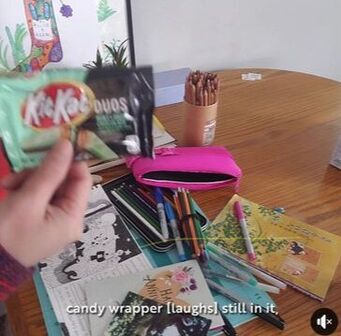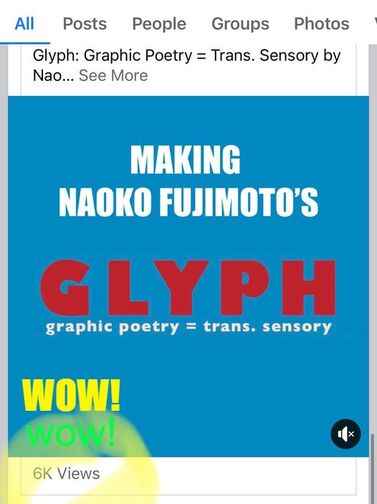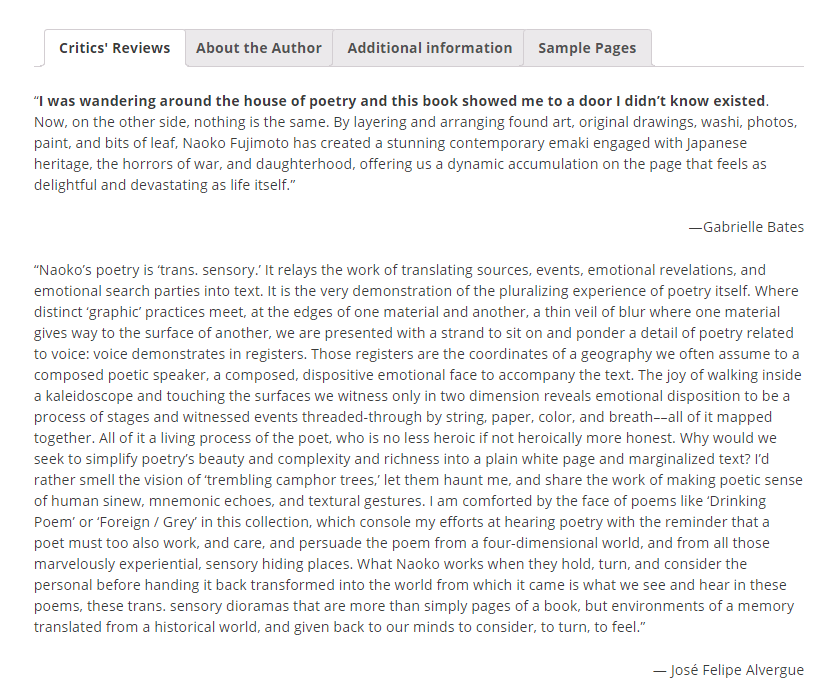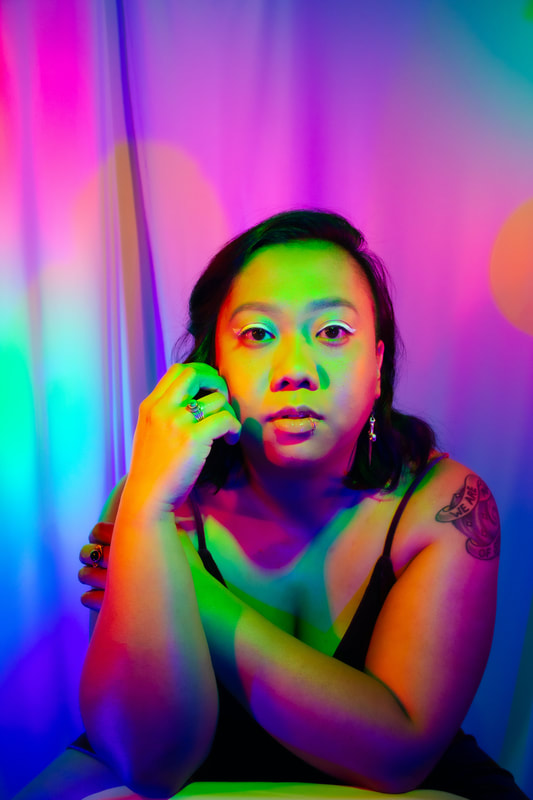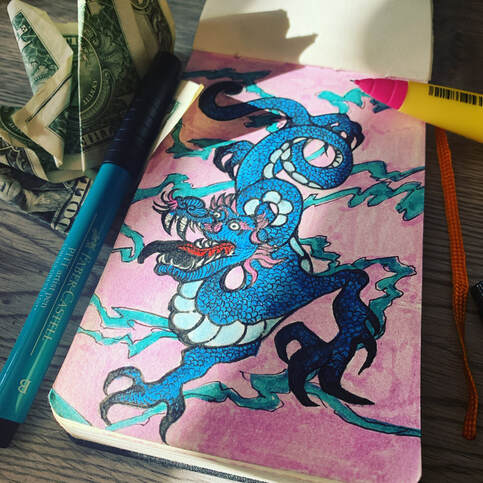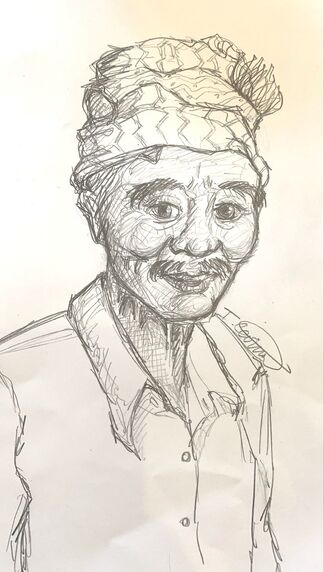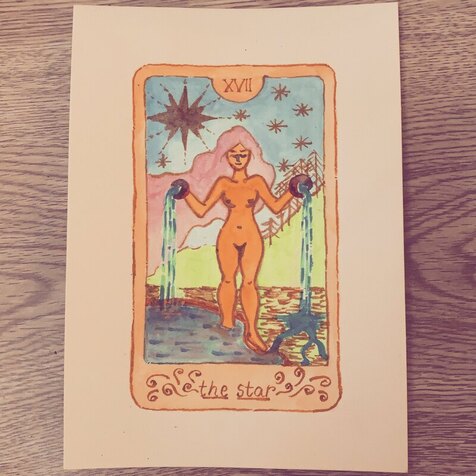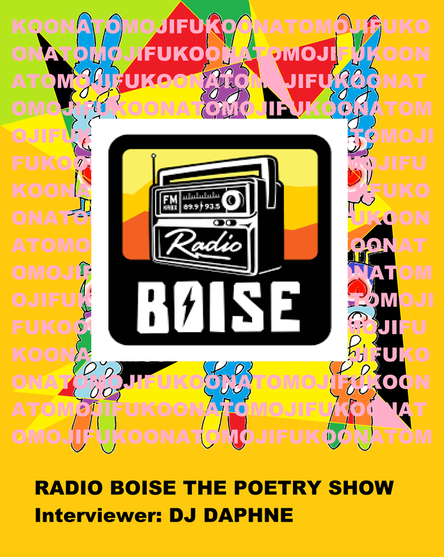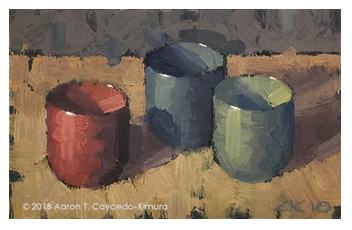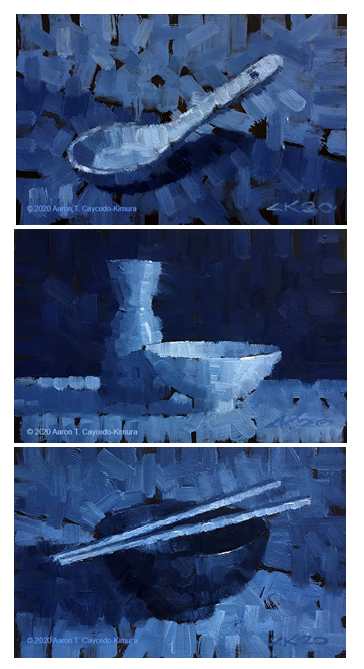|
RHINO Poetry Reviews' Editor, Angela Narciso Torres, posted the newest promotion video by Tupelo Press.
This video has SO MANY HEATBEATS! "Making GLYPH" is created & edited by dearest Jacob Valenti, who gathered an enormous volume of my short videos and photos to tie together beautifully. My book, "GLYPH Graphic Poetry = Trans. Sensory", will be released on June 1st, 2021. I want you to "Trans. Sensorise"! I am not saying this because of the Asian/Pacific American Heritage Month, but are we - - Cariño, Fujimoto, or other Asian decedents - - living with certain expectations? When I read their following craft essay, "never good enough" strikes me. Being "perfect" is a curse of being an Asian, I wonder. I got to know Cariño's poems and art though #RHINOArt2Art. Then soon after, they won the 2021 Alice James Award for their manuscript Feast, forthcoming from Alice James Books in March 2023. I am really looking forward to reading the manuscript. It is definitely an exciting time for them, but it was not easy getting there. I know - - I am not Cariño - - but I feel the common moya-moya, which is like a haze covering a main core. I am about to reach it, but some doubtful emotion blocks me out. I started practicing the piano when I was four years old, and I had no doubt that I would became a pianist. During my teenage years, I had numerous concerts and competitions to prove my potential, but I ultimately failed. I realized that my skill had never achieved a professional level. But what kind of professional levels was I talking about? Like the International Chopin Piano Competition? This mindset was dangerous, and I do not know when it was seeded. It might be a part of me through Japanese society, education system, and culture around me. And I think that I expected success, much like I tried to learn perfect English when I came here, to America. My mind was changed when I was a finalist for the Kundiman Poetry Prize in 2015. That year, Jeffrey Levine (Tupelo Press) was the final decision maker. He told me, "Naoko, you have plenty of time". Yes. I - - we - - have plenty of time. Things that we learn co-exist through our art. Deep gratitude to Cariño. Taking Time by Ina Cariño When I was an undergraduate, I pursued, at different stages, degrees in music performance, visual art, and English literature. I started playing the violin when I was eleven—too old to really amount to anything in the world of classical music. But I was stubborn, and somehow passed the audition for a small but relatively well-known school of music. My Belarusian violin teacher warned me quite seriously that, though it wasn’t a conservatory, it would most likely be rough. And it was. It seemed I was never good enough, and performing in front of my peers gave me anxiety for the first time since I’d started playing. In fact, I think I got worse over time. A year and a half in, I switched to visual art. But I’m a failed art major too—after one semester of lugging art supplies around campus and barely passing my introductory-level drawing classes, I hopped right back to music. Eventually I would receive my bachelor’s degree in English, with a minor in music performance. It took me about eight years to finish college. I come from a family of creatives. Growing up, my sisters and I took piano and painting lessons and sang in our school choirs. We were encouraged to read and write. I was kind of a sickly kid, and spent a lot of time indoors, so I guess I’m predisposed to creative activities—but looking back, I never really finished anything. I always stopped halfway. I mostly rode on being naturally good at things, which only keeps going if you put in the time and effort. Grad school was different, maybe because I was older and less concerned with the anxieties I had in my early twenties. The two-year MFA program I attended was a magical space for me. Because writing is at first a mostly solitary act, I felt I could take my time and breathe while drafting a poem. I didn’t have to perform for anyone in abstract ways. And though workshop could sometimes be rough, I never once felt crushed after a critique. At the end of my time at the program, my adviser told me that my thesis—the bones of my first poetry manuscript—was “ready.” Some are, he said, and some aren’t. Ordering the poems in my manuscript was a bit like writing a longer poem. At first, I (embarrassingly) ordered them in chronological order from the speaker’s point of view. My adviser laughed and told me to take stock: what motifs, images, forms, and emotional cores did each poem have, and what was heightened or muffled when one poem followed another? I spent so many nights in my last semester shuffling my poems, reading and rereading them. I read them out loud, over and over. So much time, creating this body of work. I had to finish, and I did. Finally, I’d seen something that I’d created through until the end. After grad school, I worked your typical after-grad-school job as a barista for about a year. When the pandemic hit, I made the decision to quit because I would make more money on unemployment. Those were hazy months. Between taking part in Black Lives Matter protests and spending more time in my apartment with my cat than I’d ever done before, I’d been sending out my manuscript everywhere, and was a finalist a couple of times for first book prizes. But really, I was losing hope for my writing; my manuscript was rejected over and over again. Unemployment didn’t last forever. Currently, I’m a technical writer for a loan and mortgage company. I work remotely Monday through Friday, from 8 to 5, with an hour lunch. Every workday has been a struggle. I don’t feel like writing after work, and, like others, I felt so isolated during quarantine. One day in March this past year, during my lunch hour, I got a call from a press to which I’d submitted my manuscript, and they told me that I’d won their book prize. It had been two years since I graduated from my program. I know that for many, it takes even longer. Of course, I was thrilled. Still, right now, I feel so far away from the poems from my thesis, and so far away from any poems that I’ll write in the future. I’m kind of in limbo, floating back and forth between almost writing and not writing at all. And I think that’s okay. In the past I’d wondered if it was too late to go back to art, to music. And I think it’s not. And we still have so much time in isolation, even as the new CDC mask guidelines have been announced. I’ve been drawing more. I’ve been trying my hand at watercolor, something I’ve always been terrible at. I picked the guitar back up, when I’d only dabbled in playing it in the past. And sometimes I worry that I’m not really a poet, which is a fear that many poets probably have. Every day is a struggle, each moment shifting and changing in ways that can sometimes make things seem more uncertain. And I’ll never be a violin virtuoso, or an artist with solo shows. But I think I’ve finally made peace with the fact that things take time, and that time takes time, too. Ina Cariño holds an MFA in creative writing from North Carolina State University. Their poetry appears or is forthcoming in Poetry Northwest, Apogee, Wildness, Waxwing, New England Review, Tupelo Quarterly, and elsewhere. Ina is a Kundiman fellow, a Best of the Net finalist, a Pushcart Prize nominee, and a recipient of a fellowship from the Vermont Studio Center. They are the winner of the 2021 Alice James Award for their manuscript Feast, forthcoming from Alice James Books in March 2023. In December of 2019, Ina founded a poetry series, Indigena Collective, centering marginalized creatives in the community.
I am still collecting craft essays from poets, writers, and translators. I would also like to share my journey of releasing my newest book, "GLYPH: Graphic Poetry = Trans. Sensory" (Tupelo Press, 2021) in the Working On Gallery. The book will be nationally available on June 1st. GLYPH: GRAPHIC POETRY=TRANS. SENSORY by Naoko Fujimoto $21.95 All color Weight 0.5 lbs Dimensions 8.5 × 11 in Sample Page My first GLYPH journey was with DJ Daphne from the Poetry Show at Radio Boise. We talked about graphic poems, creative processes, and Japanese culture. Her warm, welcoming tone guided me beautifully. It was like a girl's talk. I really enjoyed having a conversation with her. As many people know, I am super not good at calculating time zones. I almost made a huge mistake (again), but I was fifteen minutes early, so I was playing the piano to pass the time. So I did not realize that she was there! The show was recorded on a peaceful afternoon. You may like listening to my 100% authentic NAOKO voice. "The Poetry Show!" airs from 5-5:30 p.m. MT (7-7:30 p.m. CT) Every Sunday The Radio Boise streaming service It is a really exciting time for Aaron Caycedo-Kimura. His debut collection, Ubasute, is a gorgeous chapbook. I am going to talk about his chapbook in RHINO Reviews (forthcoming). His full-length book will be available in 2022. He shared his new project, Aizome postcards. It is a strange coincidence, but my grandmother had practiced Aizome, Kusaki-zome, & Shibori for a long time. I still have some her works with me, so I just opened up my old suitcase thinking of her. Now, her Alzheimer's condition is worsening, and she was just moved to a hospital. Aizome blue is different from any other blue. It is dark, slightly brighter than the bottom of ocean. It is a blue mixed with both sunshine and shadow. It is the color of Japanese everyday life. Caycedo-Kimura's paintings captured it. When I was in elementary school, I tried Aizome-Sibori with my grandmother. Even though I wore gloves, I ended up died blue from the head to toe. I had blue spots on my cheeks all afternoon. My sister had a flower pattern and she succeeded. Mine was an incomplete mess with blue and white dots on a cloth. I feel close to my Japanese identity with Caycedo-Kimura's works today. ありがとう。 Craft Essay by Aaron Caycedo-Kimura Every year from December through January, I participate in an exhibit at the Chester Gallery in Chester, Connecticut, now owned and operated by artist Nancy Pinney. The exhibit is called the Postcard Show, a magical gathering of pieces that are 4” x 6” or smaller from about sixty local and regional artists. Inspired by Sol Lewitt, who had much of his framing done at the gallery and was an early contributor to the show, the former owners Jack and Sosse Baker came up with the idea more than twenty years ago, just because they liked postcards. The work ranges from watercolors to oils, from photographs to collages, from multi-media to the three-dimensional. Over the years, I’ve painted still lifes, landscapes, and buildingscapes in oil for this show. Since many of my still lifes sold in 2018 and 2019, I decided to make them again for the 2020 holiday season, but I wanted to try something a little different. In May of 2020, I started following the Instagram account of a boutique in Tokyo called Blue & White (@blueandwhite_japan) at the recommendation of writer Mari L’Esperance, author of the poetry collection The Darkened Temple. The store, which collects and sells blue and white crafts, is one of her favorites. The clothing and textile items in their inventory are all aizome products (indigo-dyed). They also collect old handmade tools and furnishings, which appeal to my rustic tastes. After following the account for a while, I thought it might be interesting to paint the postcard still lifes monochromatically in aizome blue. At the same time, I felt it was a bit risky. Part of the appeal of my previous still lifes was the handling of temperature—the degree of warmth and coolness in colors and their interrelationships—to create harmony, atmosphere, and depth. I had some experience years ago painting monochromatic figures and portraits, and so I knew that without a full palette of colors, including yellow in particular, one had to rely just on tonality to make a compelling image. My first challenge was getting the right hue. I drove to the art store and bought a 200 ml tube of “indigo,” thinking that would be the easiest solution. I started by painting a white Chinese soup spoon. I like to paint from life whenever I can and used one that belonged to my mother. For paper, I used Wallis Archival Sanded Paper (museum grade), which is hard on the brushes—I use inexpensive ones that I buy every year—but I like the way it holds the paint. On finishing the painting, I loved the color; however, it wasn’t as blue as I thought aizome products usually are. It was grayer. So I mixed it with ultramarine and a bit of cerulean. I painted the spoon again, almost an exact copy of the first image just to compare. Satisfied with the new blue, I painted a series of fourteen postcards, the first five for the gallery and then an extra nine to sell from my studio. To test whether or not people would respond well to them, I started posting the first ones on my social media accounts starting in November. I still wasn’t certain the general public would “warm” to the them because of their lack of temperature. Many times I find that what I like isn’t necessarily what everyone else does. To my delight, they were well received. I think blue is just an appealing color. The most challenging aspects of painting these were making the relationships of light and dark accurate, or at least convincing, and also choosing objects that would give the paintings nice ranges of lights and darks. I usually block out a painting first by starting with the lightest tone then working my way down to the darkest, keeping in mind that the highlight will be pure white and needs to pop, even when it’s on a white object. The relationship between a white object and its highlight is greater than one might think. I tried different objects and combinations of objects, trying to keep the tonality dynamic. Generally, I found that white objects worked the best, standing out to the eye like an actor onstage in the spotlight. There were a couple of exceptions where I chose as the main object something dark, accented with a smaller, lighter object or objects. These seemed to work well, too. One special outcome of this endeavor is that many poets and other writers I know now own some of these postcards. I love the thought of these paintings in their homes as they create their own work, keeping them company, and maybe inspiring them in some way. I'm currently working on some larger monochromatic “aizome paintings” with the hope that they will be equally successful. Aaron Caycedo-Kimura is a writer and visual artist. He is the author of Ubasute, which won the 2020 Slapering Hol Press Chapbook Competition, and the author of the full-length collection Common Grace, forthcoming from Beacon Press in Fall 2022. His poetry has appeared in Beloit Poetry Journal, Poet Lore, DMQ Review, Tule Review, Louisiana Literature, The Night Heron Barks, and elsewhere. Aaron earned his MFA in creative writing from Boston University and is a recipient of a Robert Pinsky Global Fellowship in Poetry. He is also the author and illustrator of Text, Don’t Call: An Illustrated Guide to the Introverted Life (TarcherPerigee, 2017).
|
Archives
July 2024
|
フジハブ
Welcome to FUJI HUB: Waystation to Poetry, Art, & Translation. This is not your final destination. There are many links to other websites here, so please explore them!
Welcome to FUJI HUB: Waystation to Poetry, Art, & Translation. This is not your final destination. There are many links to other websites here, so please explore them!
What are you looking for?
FUJI HUB Directory
Popular Sites:
Gallery of Graphic Poems
Working On Gallery
(Monthly New Article by Writers & Artists)
About Naoko Fujimoto
Contact
Naoko Fujimoto Copyright © 2024
FUJI HUB Directory
Popular Sites:
Gallery of Graphic Poems
Working On Gallery
(Monthly New Article by Writers & Artists)
About Naoko Fujimoto
Contact
Naoko Fujimoto Copyright © 2024
